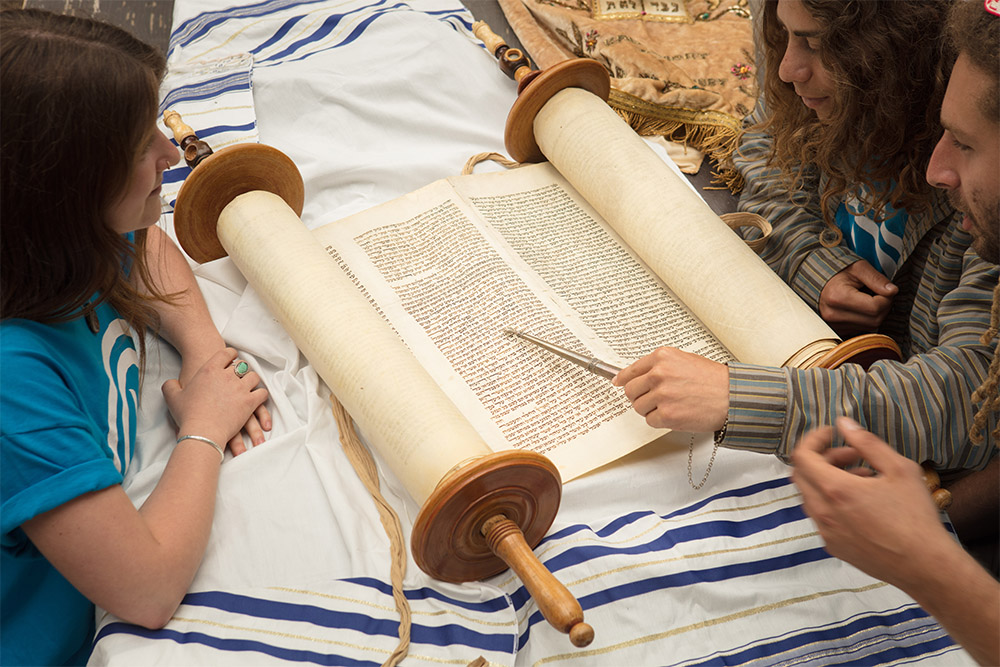
The Torah, the first five books of the Hebrew Bible, is the foundation of Jewish life and learning. It’s a rich tapestry of stories, laws, and teachings that have guided the Jewish people for millennia. Introducing young learners to the Torah is a crucial step in their Jewish education. It provides them with a framework for understanding their heritage, developing their moral compass, and connecting with their faith.
Making the Torah Accessible for Young Minds
The Torah can seem daunting for young children. It’s important to make it accessible and engaging for them. Here are some ways to introduce young learners to the Torah:
- Start with the Stories: The Torah is filled with captivating stories that resonate with children. From the creation of the world to the adventures of Abraham, Sarah, Moses, and others, these narratives bring the Torah to life. Use age-appropriate storybooks, animated videos, or dramatic play to engage children with these stories.
- Focus on Key Themes and Values: The Torah teaches valuable lessons about kindness, compassion, justice, and respect. Focus on these core values when introducing the Torah to young learners. Use stories and examples to illustrate these values in action.
- Connect to Their Lives: Help children connect the stories and teachings of the Torah to their own lives. Ask them how the stories relate to their experiences and how the values can guide their actions. This will make the Torah more relevant and meaningful for them.
- Use Visual Aids: Children often learn best through visual aids. Use pictures, maps, and other visual materials to bring the Torah to life. Create a Torah scroll craft or use puppets to act out stories.
- Make it Fun and Interactive: Learning about the Torah should be a fun and engaging experience. Use games, songs, and other interactive activities to make learning enjoyable. Incorporate music and movement to keep children engaged and excited.
Introducing the Different Books of the Torah
Explain to children that the Torah is comprised of five books: Genesis (Bereishit), Exodus (Shemot), Leviticus (Vayikra), Numbers (Bamidbar), and Deuteronomy (Devarim). Briefly introduce the main themes of each book. For example, Genesis tells the stories of creation and the patriarchs and matriarchs. Exodus tells the story of the Israelites’ escape from slavery in Egypt.
Exploring the Weekly Torah Portion
Many Jewish communities read a portion of the Torah each week. This is a great opportunity to engage children with the Torah on a regular basis. Find age-appropriate summaries or children’s books that explain the weekly Torah portion. Discuss the stories and themes with your children and encourage them to ask questions.
The Importance of Repetition and Review
Repetition and review are essential for young learners. Revisit stories and teachings from the Torah regularly to reinforce their understanding. Use different methods to review the material, such as games, quizzes, and storytelling.
Making it a Family Affair
Learning about the Torah should be a family affair. Read stories together, discuss the teachings, and celebrate Jewish holidays and traditions. Create a positive and supportive learning environment where children feel comfortable asking questions and exploring their Jewish heritage.
A Lifelong Journey of Learning
Introducing young learners to the Torah is the beginning of a lifelong journey of learning and discovery. By making the Torah accessible and engaging, we can instill in them a love for Jewish learning and a deep connection to their heritage. This will provide them with a strong foundation for their Jewish education and their future as members of the Jewish community.
